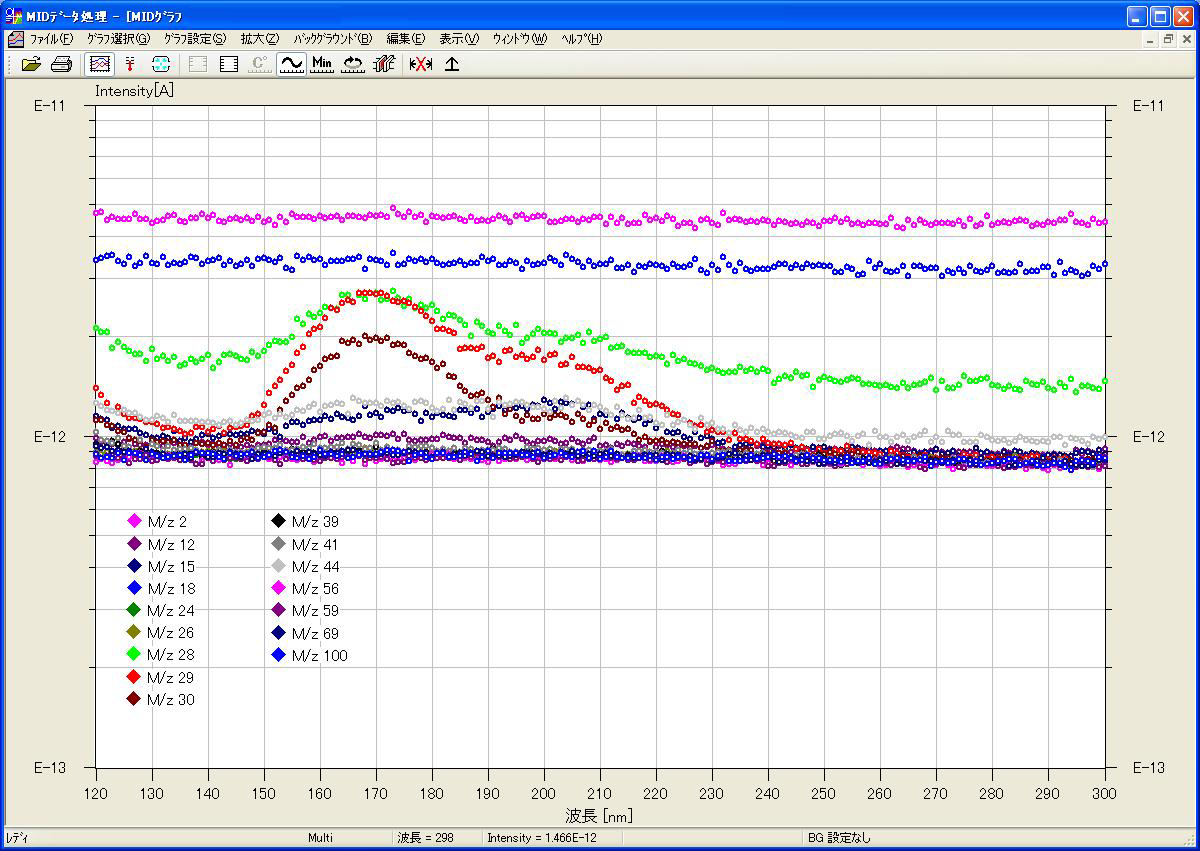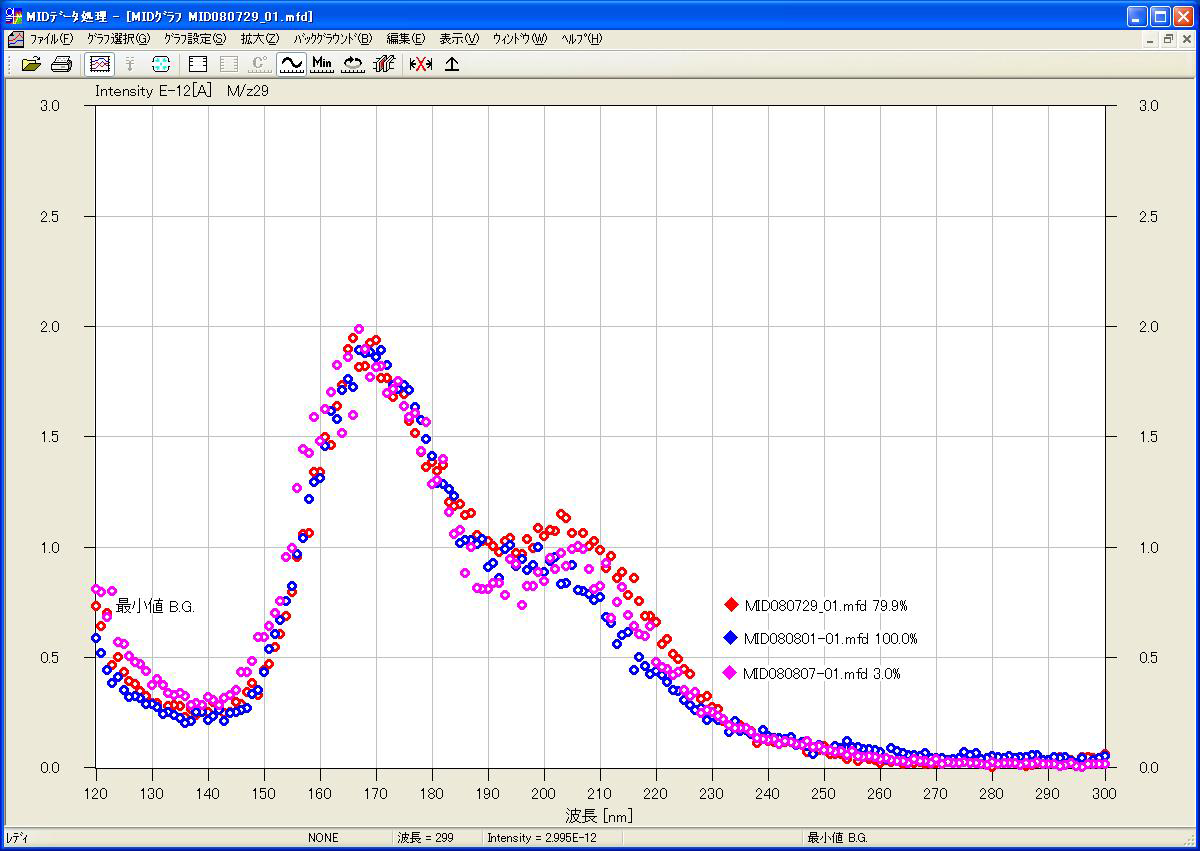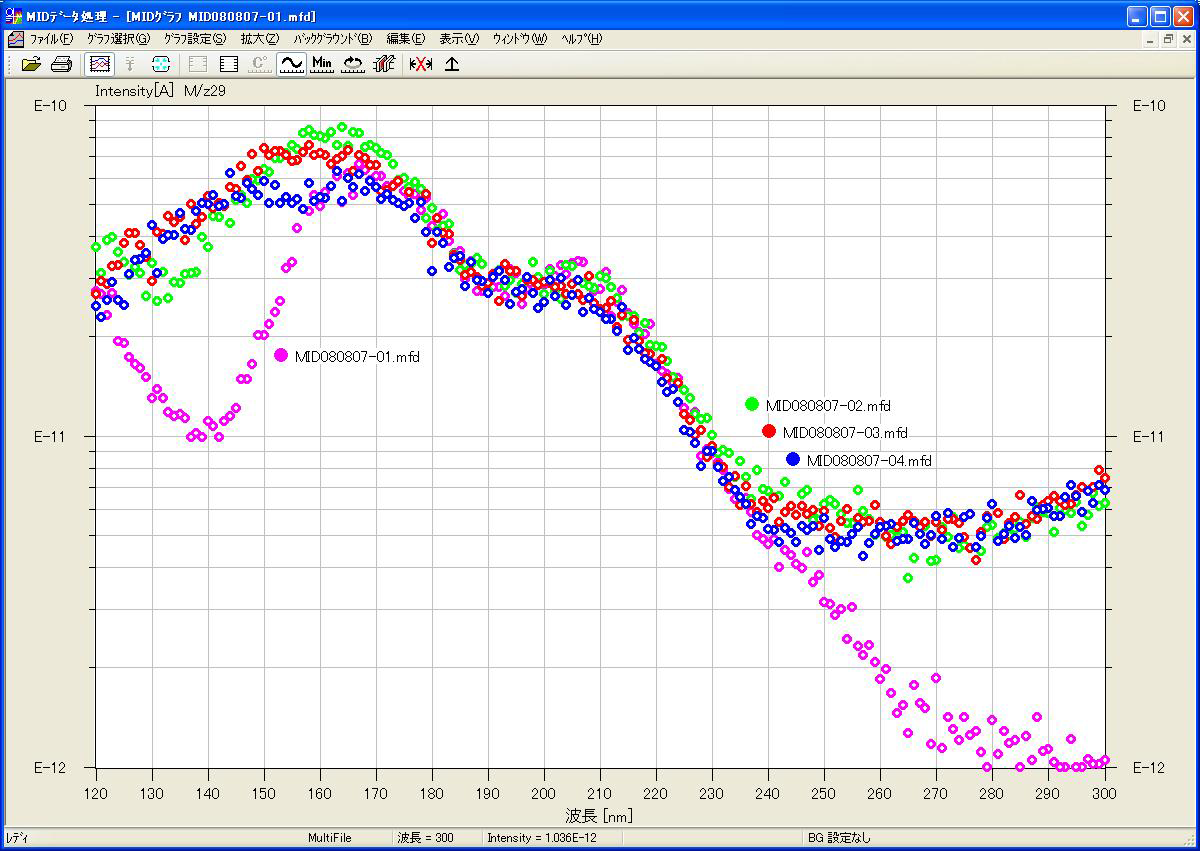Acquisition data example (PMMA)
Photodetachment experiments of PMMA (polymethyl methacrylate, acrylic) were carried out to verify the principle of the device.
Here, it is confirmed that the sample absorbs light and the different components are separated for each wavelength.
Fig 1 shows the photodetachment data of PMMA film at room temperature.
The detachment of methyl and ethyl groups can be confirmed at 170 nm and 210 nm.

Fig 1 PSD data of PMMA film at room temperature
Fig 2 shows the photodetachment data of the same PMMA film at room temperature, but comparing the mass number 29 for three samples measured on different days.
Although the multiplication factor of the quadrupole mass spectrometer was changed between each measurement, and sample adjustment was also performed separately, there is some deviation in the signal, but it is judged to be stable data.

Fig 2 State of change of PMMA film on each day
Fig 3 also shows the photodetachment data of the PMMA film at room temperature.
This data shows 4 instances of photodetachment with one sample placed in ultra-high vacuum.
Only the first data has a different signal shape, but this is data of a sample just brought in from the atmosphere.
It was thought that the outermost surface of the PMMA film reacted with the atmosphere and the state changed.
When the film thickness of the PMMA film after photodetachment measurement was measured, a film thickness decrease of 4 nm was observed for one photodetachment measurement.
From this, the first data is data of the PMMA film affected by the atmosphere, and the second and subsequent data are pure PMMA films.

Fig 3 Result of measuring the same sample four times
